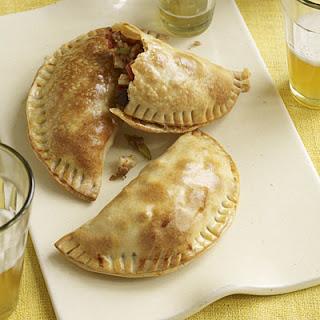
By Alli Sinclair
There are two factors that determine my affection for a country:
1/ The attitude of the people
2/ The quality of the food
I’ve been very fortunate to have had a 99% success rate with the countries I’ve visited (only one country has disappointed me, and no, I won’t share!). As a self-confessed foodie, I keep a “food diary” when abroad. It’s full of recipes I’ve collected from chefs and new-found friends, and every recipe has an entry about where I first tried a particular dish, my first impressions of the place, and the people I shared the meal with.
On top of my food adventures list is Ushuaia, Argentina. Situated on Tierra del Fuego, Ushuaia is the southernmost city in the world (although the Chileans will dispute this—don’t get them started). Located on the icy shores of the Beagle Channel and surrounded by the Martial chain of mountains, Ushuaia could easily be mistaken as a seaside town in Scandinavia. It’s now a stepping off point for boat trips to Antarctica, but for me, Ushuaia is where I had one of the most wonderful experiences in my life—even though I didn’t know it at the time.
Somehow I’d stumbled upon a hostel owned by a couple who looked like they’d just stepped out of a hippie commune. My gentle hosts knew little English, but smiled and made me feel welcome the minute I knocked on their door. Although the hostel rooms were small, the communal living area had a massive floor-to-ceiling window with some of the most magnificent views of Ushuaia. Snow-capped mountains framed the steely gray waters of the port where yachts bobbed up and down. Off in the distance were penguin colonies, and some of the world’s most remote ranches. My planned stay of a week stretched into a month.
In the back of the hostel was a shiny, stainless steel kitchen. Guests had access to the fridge, ovens, and cooking utensils, and most nights a cook-off would take place. Travelers from all over the world made their favorite recipes to ward off homesickness, and it was a delight to try out meals from far-flung locales. But things changed dramatically when Rosa and Paulo from Mendoza, Argentina, arrived.
I’d only been in Argentina a short time so I was still testing the waters with my rudimentary Spanish. A trip to the supermarket that should have taken 10 minutes would drag into an hour because I had to pull out my dictionary every time I read a label or needed to ask for something. It hadn’t worried me, but Rosa decided to take me under her wing, and I quickly became her pet project. Determined for me to get a grasp on the language, Rosa dragged me to the markets, confiscated my Spanish/English dictionary, and made me memorize words and phrases. This curvy, pint-size woman with red, frizzy hair scared the crap out of me. She smiled as she barked orders, and I obeyed by reciting my fruits and veggies, hoping this tough love would pay off. Either that, or very shortly, Rosa would jump onto a plane back to Mendoza.
After a few days, Rosa handed me a piece of paper written in her cursive script, with her g’s and y’s dropping down two lines. Of course, the note was in Spanish. She told me she’d organized for a feast at the hostel that night, and I was going to be in charge of the empanadas. That’s when I tried out some choice Spanish phrases. She shrugged, handed me a plastic bag of ingredients, and said she’d be back shortly.

The view from the hostel window in Ushuaia
I peered into the bag, found the empanada ingredients, and stared at the note. Mierda. I could barely boil water without burning the bottom of the pot; how on earth was I going to make empanadas and feed the hungry hordes? Everyone else was out on excursions or at a bar that afternoon, so I was alone in the large, cold kitchen and felt very, very lonely. The door banged open, I looked up, and Rosa waddled in clasping a couple of bottles of fine Mendocino Malbec.She pulled out a couple of juice glasses, cracked open the bottle, poured the dark red liquid, and handed me a glass. We toasted to our health, I made a silent wish that I wouldn’t kill anyone with my cooking, and we set to work. That rainy afternoon, I learnt some Mendocino slang and what it’s like to like to grow up in Mendoza. I also increased my Spanish vocabulary ten-fold. Rosa showed me how to lovingly make the dough and filling, and how to shape these delights into little half moons, complete with swirly patterns. Little did I know, this experience was the start of my life-long love for the city that eventually became my home—Mendoza.
That night, we pushed the tables together, sat our 20+ guests down, and fed them some of the most delicious empanadas I’ve ever tasted (yes, I say so myself!). These pastries were made with love, laughter, and friendship and that flowed through to the group gorging themselves between animated conversations and taking large gulps of wine.
Months later I met up with Rosa and her husband in Mendoza, and we shared more cooking adventures. Her passion for her country’s food and love of people rubbed off on me, and now I enjoy introducing new dishes to friends and family. Although occasionally I still burn the pot that’s supposed to boil water.
And here’s the delicious empanada recipe:
Filling: 1 tbs olive oil 1 onion, finely chopped 1/2 tsp ground cumin 1/2 tsp ground cinnamon 1/2 tsp paprika Large pinch of ground nutmeg Large pinch of ground cloves 3 hard-boiled eggs, peeled, coarsely chopped 15 pitted black olives Melted butter, to brush
Pastry: 3 cups of plain flour 100 grams of chilled butter 1 tsp salt 1 egg yolk, lightly whisked 5 tbs chilled water
Heat the oil in a large frying pan. Add the onion, stir until it is clear and soft. Add the ground beef, stirring with a wooden spoon until brown and cooked through. Add the cumin, cinnamon, paprika, nutmeg, and cloves. Stir again and transfer to a large heatproof bowl. Leave in the refrigerator for 30 minutes.
Make the pastry by placing the flour, butter and salt in a blender. Process until it looks like breadcrumbs. Add the egg yolk and water and process again until the dough starts to cling. Take out and place on a floured surface and knead the dough until all lumps are removed. Wrap in plastic and place in the refrigerator for about 20 minutes. Line 2 large baking trays with baking paper. Turn on oven to 200C. Roll out the pastry until it is around 3 millimetres thick. Cut the pastry into 15 discs, 12 centimetres in diameter.
Stir the egg into the ground beef and mix with the seasonings. Place a heaped tablespoon of ground beef in the center of the pastry disc. Top with 1 or 2 olives and brush the edges of the pastry with water. Fold so it is in the shape of a half moon. Press the edges together and use a fork to crimp the edge. Place on a lined tray and repeat this until all the empanadas have been made. Put it in the refrigerator for 30 minutes. Brush the empanadas with melted butter, bake in the over until golden (around 25 minutes). Eat and enjoy!

